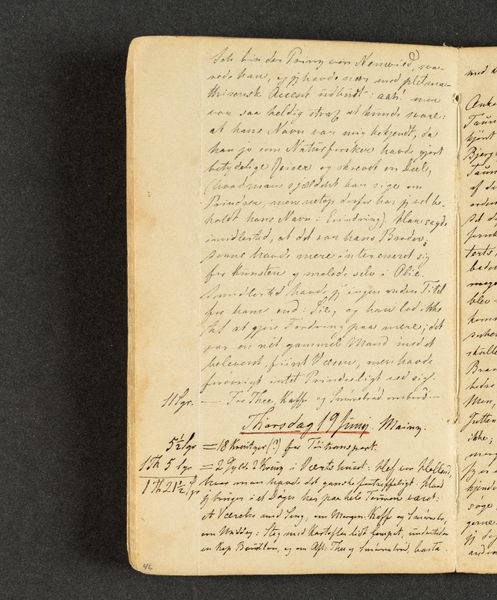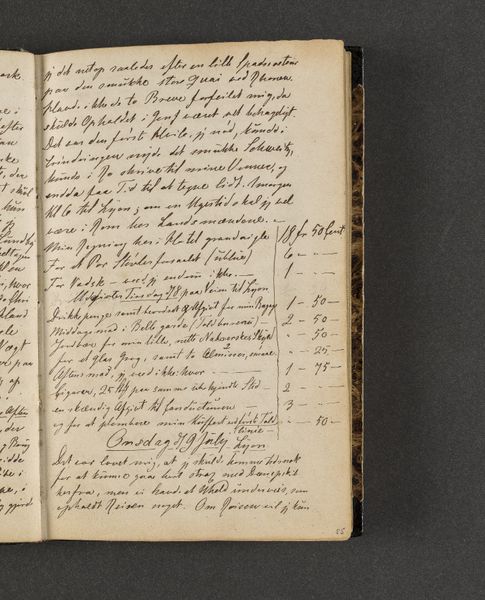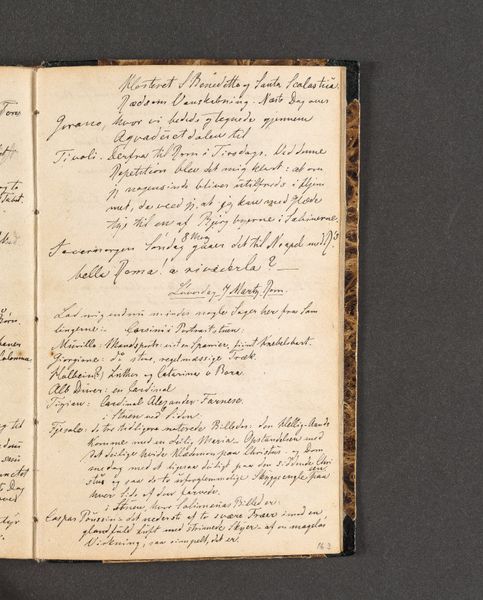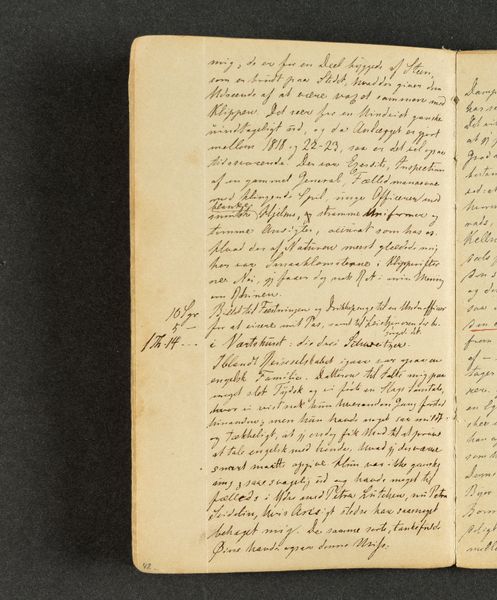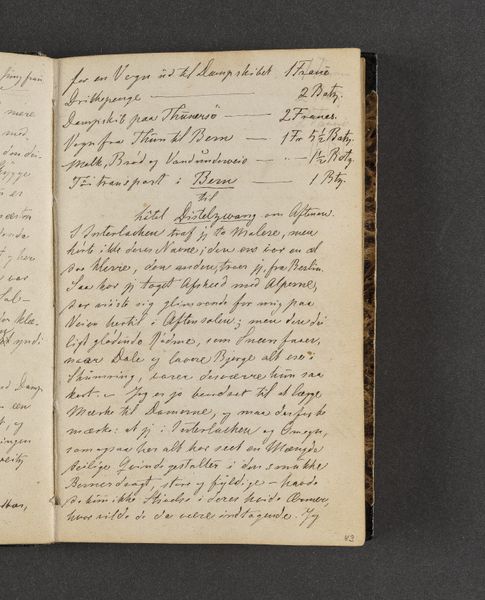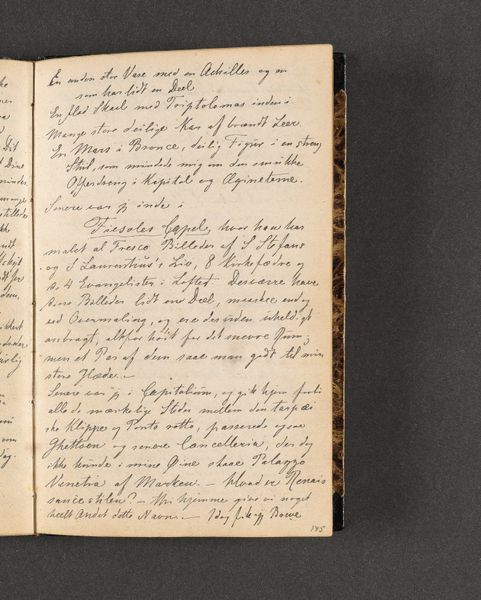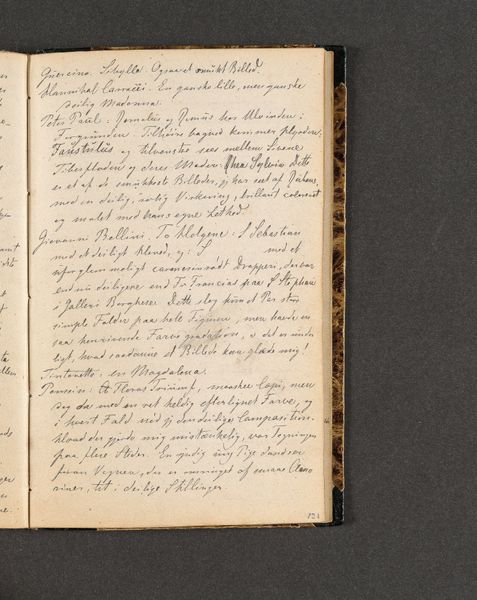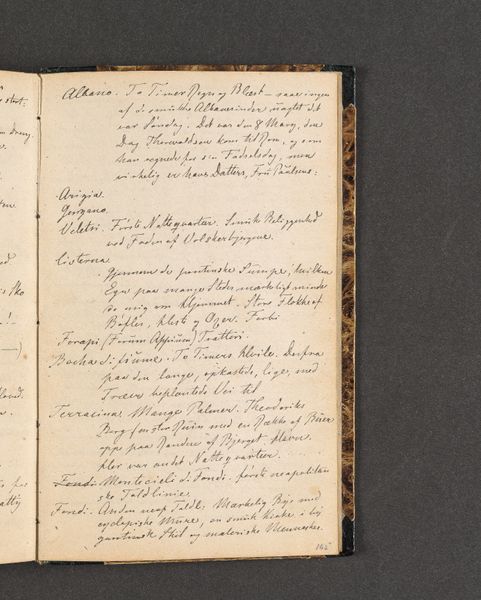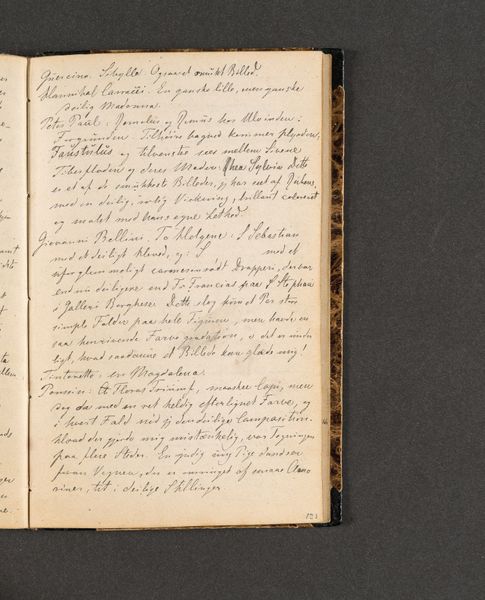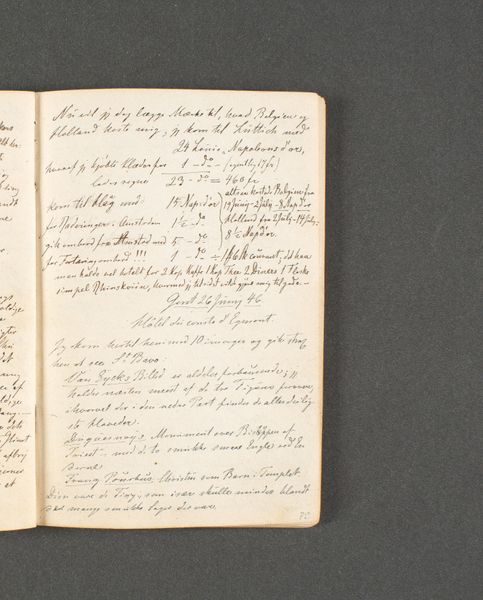
drawing, paper
#
drawing
#
paper
Dimensions: 163 mm (height) x 98 mm (width) (bladmaal)
Curator: Welcome. We are looking at “Rejsedagbog”, a drawing on paper created around 1845 by Johan Thomas Lundbye. The piece is currently held at the SMK, the National Gallery of Denmark. Editor: It’s basically handwriting, lots of old-timey script across the page, in sepia tones with little red markings. The paper has aged, the way old paper does. Looks…intimate, maybe? Curator: That’s an interesting reaction. This notebook offers us an intimate, historical glimpse into the economic realities of Lundbye's travels. I think this seemingly simple piece connects directly to discourses around 19th-century class, artistic patronage, and the economics of travel itself. Look closely. These appear to be meticulously recorded expenses. Editor: Oh, sure, when you put it THAT way…travel costs, accommodations, maybe even food! I wonder what the story is behind “Flaske Ør.” Hmmm. He’s getting granular with these notes. Curator: Exactly. The very act of recording these expenditures reflects Lundbye’s position in society, doesn’t it? As an artist, reliant on specific economic models, he would have needed a record to get adequately reimbursed. These small scribbles were critical for him. They are data points. Editor: It does personalize him in a way. Not just a lofty painter communing with nature but a guy counting his pennies, or whatever they used then. Still has that intimate feeling, though maybe in a different sense now. Curator: Well put. This reveals a layer beyond artistic expression. It invites consideration of what labor and financial precarity truly mean for artists historically and now, framing them in light of gender and race too. Whose expenses got covered without question, and who had to account for every "Kone of ½ Flaske Viam"? Editor: Never thought about a little notebook having so much to say! I’ll remember Lundbye not just for pretty landscapes. Curator: I concur. It encourages reflection on overlooked aspects of art history—prompting me to rethink everything.
Comments
No comments
Be the first to comment and join the conversation on the ultimate creative platform.

